Renovated farmhouses are a powerful way to preserve rural heritage while adapting historic structures for modern living. Architects are creatively reimagining these buildings, blending traditional forms with contemporary design to meet today’s needs. From Portugal to Iceland, these projects showcase how old farmhouses can be transformed into functional, beautiful spaces that respect their history while embracing innovation. Here, we explore three standout examples of this inspiring approach to architecture.
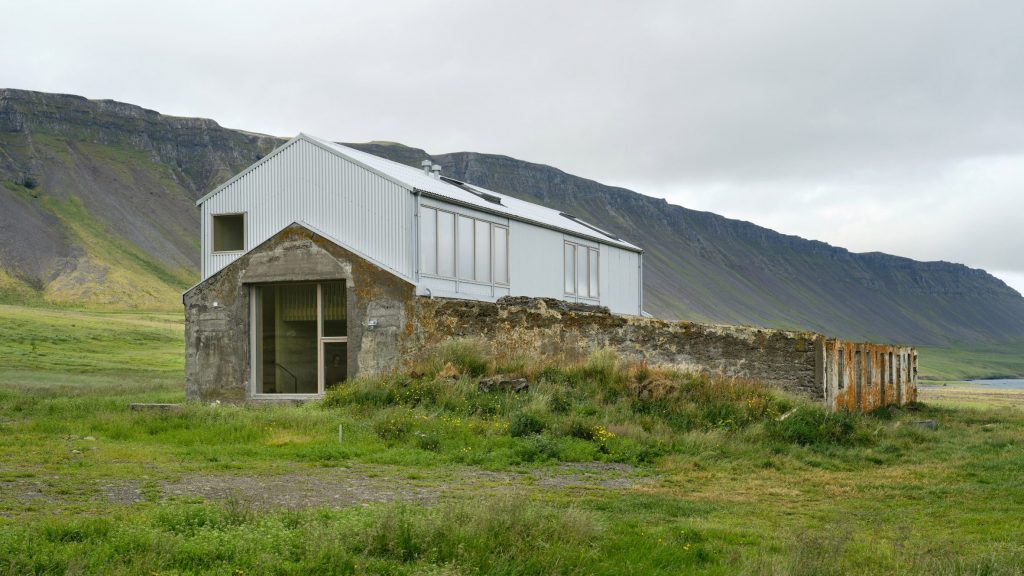
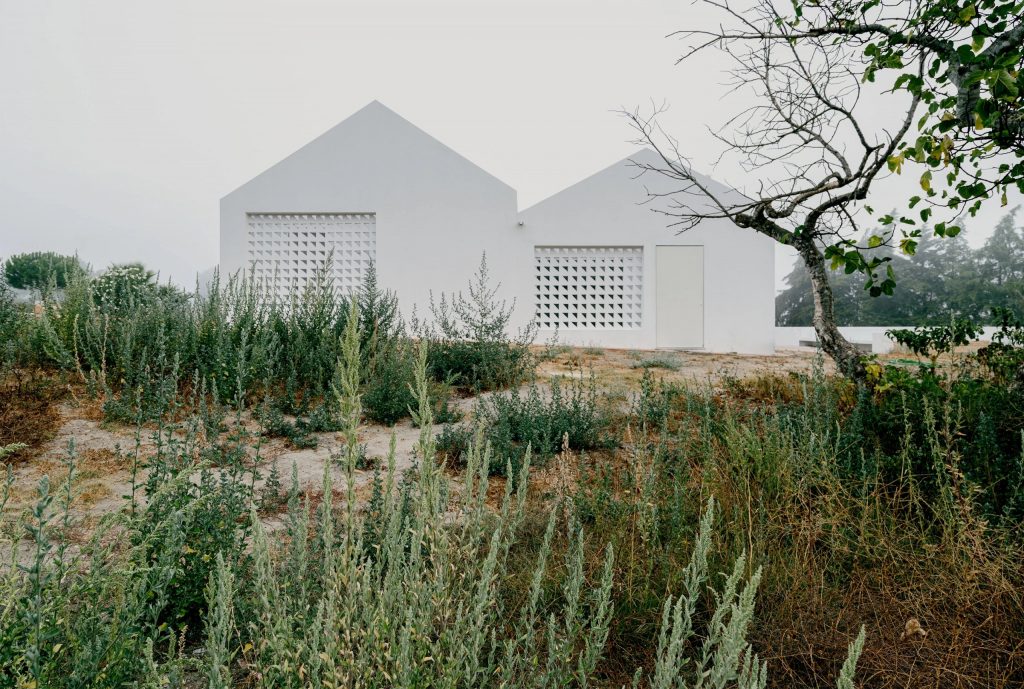
Casa Mãe by Atelier Data
Renovated and repurposed farmhouses are a growing trend in architecture, where traditional forms are reimagined for modern living while honoring their historical roots. One such example is Casa Mãe, a beautifully renovated farmhouse in the Alentejo region of Portugal, designed by Lisbon-based Atelier Data.
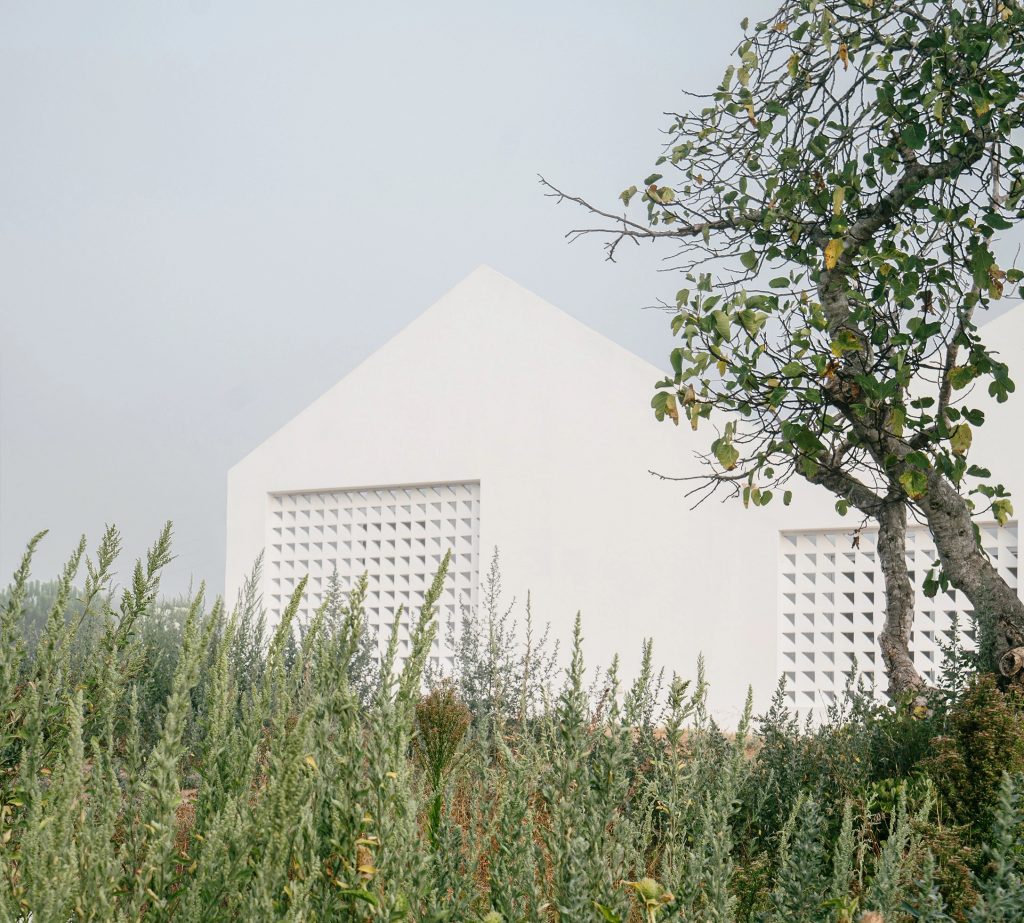
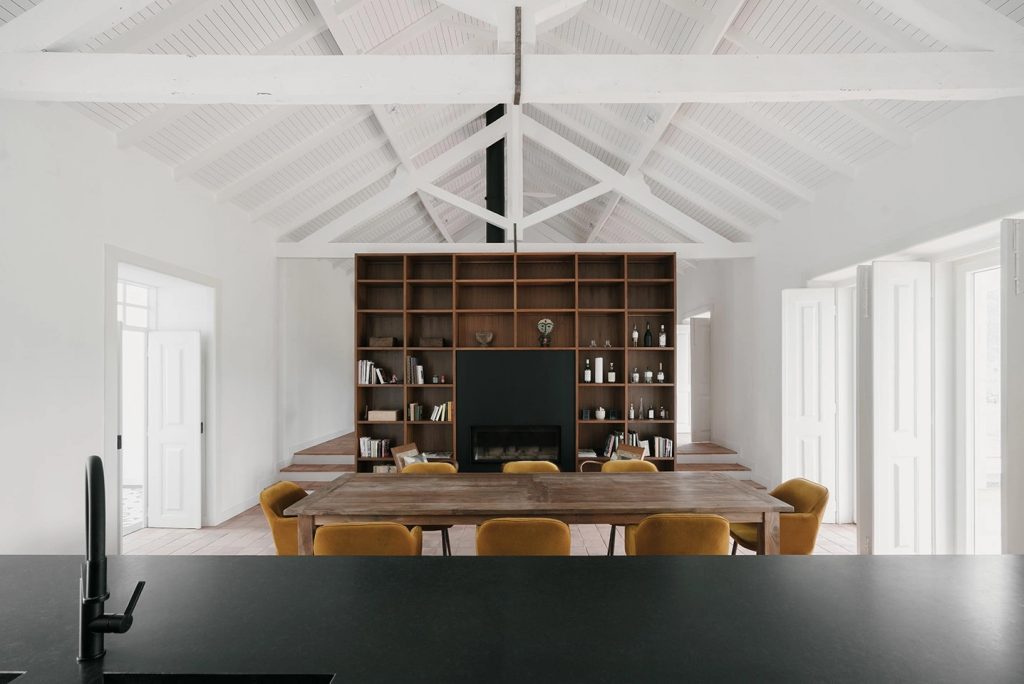
Casa Mãe by Atelier Data
Originally a timber-framed dwelling, Casa Mãe underwent a thoughtful transformation that retained the essence of the original structure while introducing contemporary elements that enhance its functionality and connection to the surrounding landscape. Atelier Data, which had previously worked on the site in 2012, returned to the project with a clear focus on “rehabilitation and recovery.” Their approach stripped back any unnecessary additions, using simple, white-painted finishes both inside and out to create a clean, modern aesthetic that complements the farmhouse’s historic character.
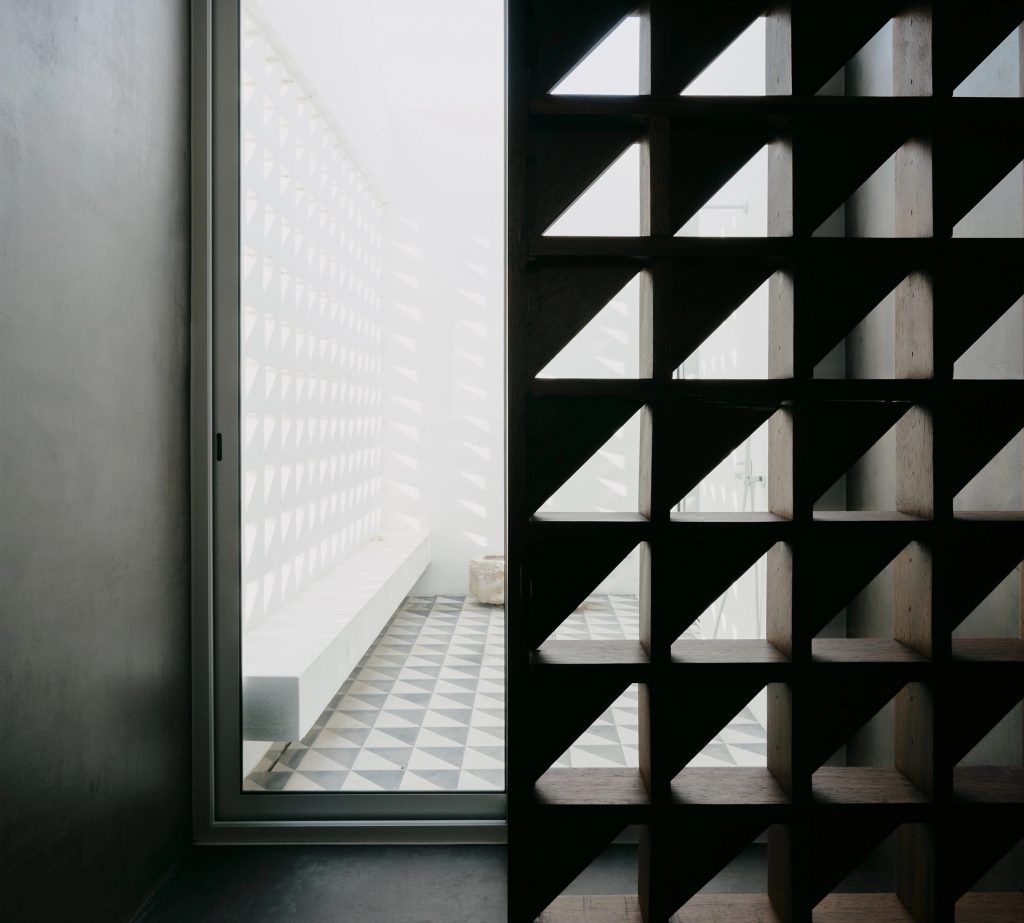
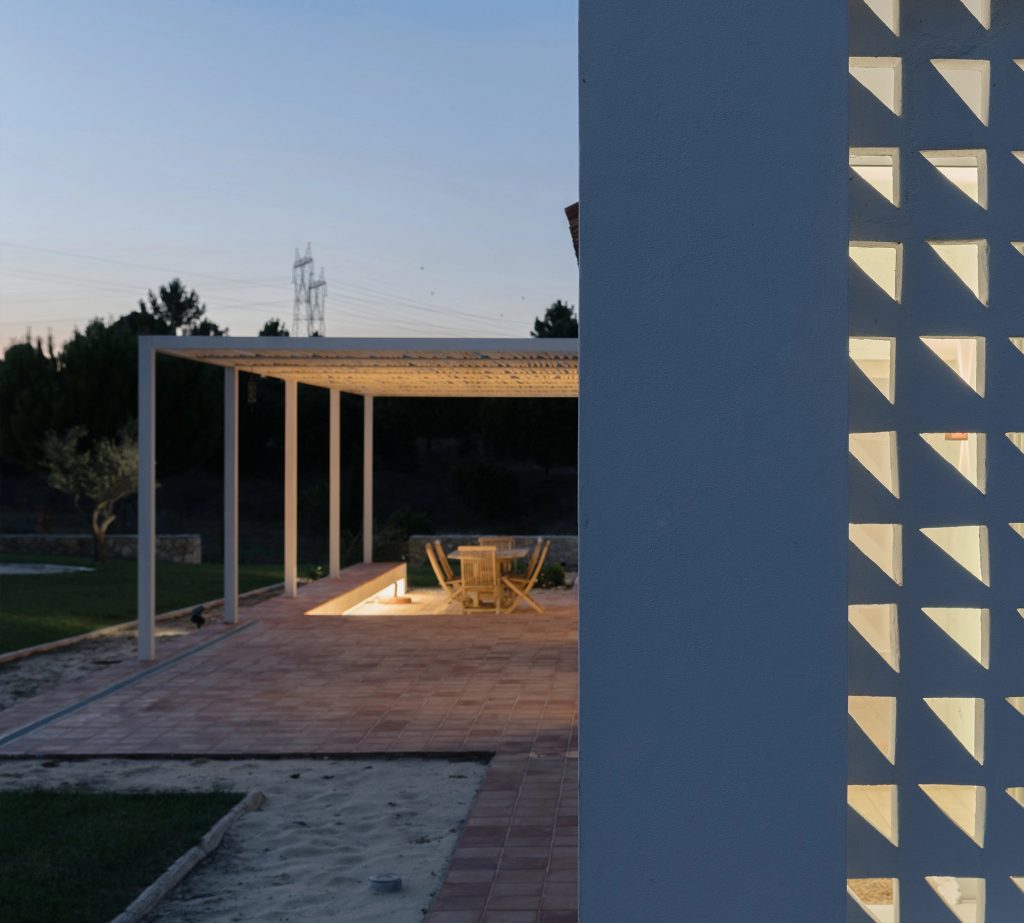
Casa Mãe by Atelier Data
At the heart of the home is a spacious kitchen and dining area, which opens onto a new paved terrace. Here, a white-painted wooden pergola provides shade, fostering a seamless flow between indoor and outdoor spaces. The design emphasizes the communal and social nature of the home, with the pergola reinforcing the connection between the house and its beautiful rural surroundings.
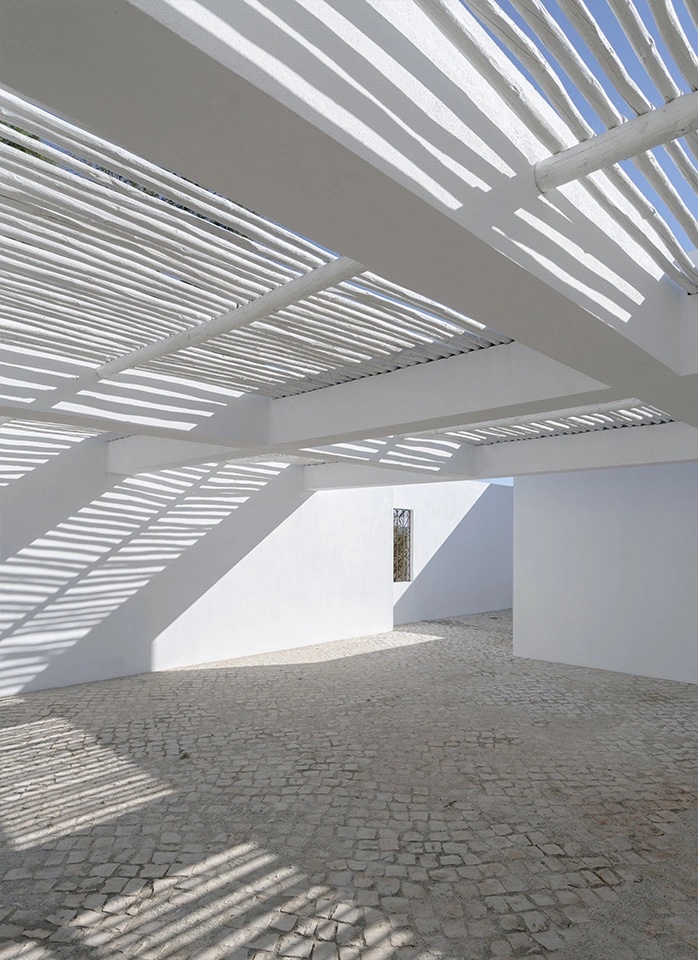
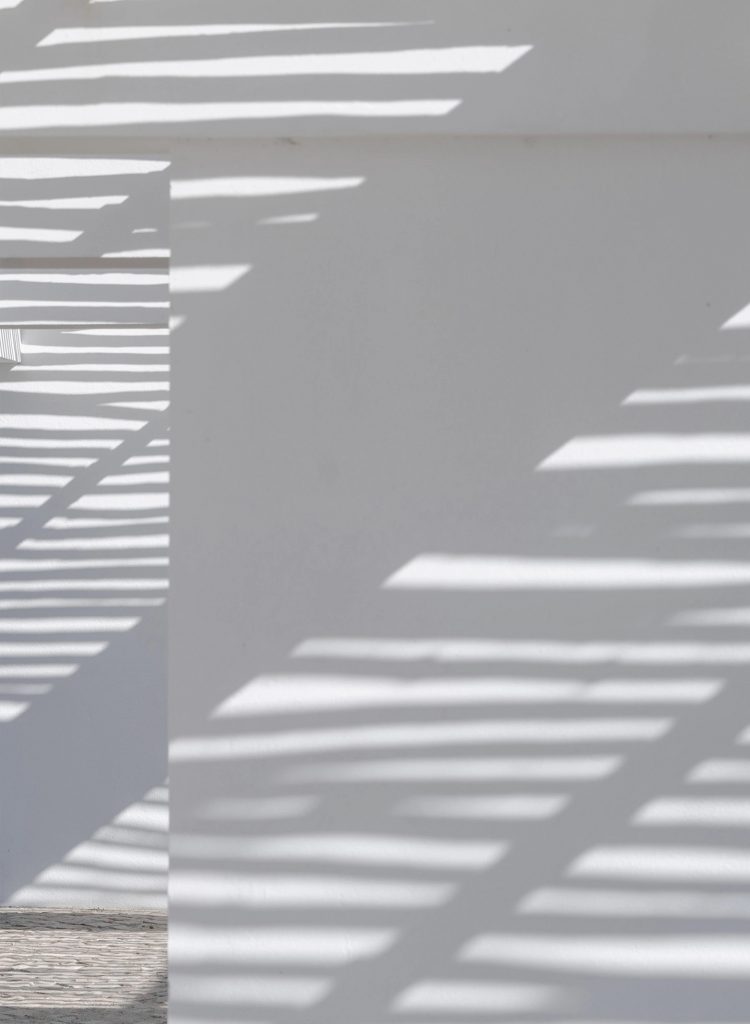
Casa Mãe by Atelier Data
The southern wing of the house features two en-suite bedrooms, each extending into a new volume that mirrors the scale and form of the original building. These new additions include expanded storage areas and bathrooms, which open onto private patios, offering a tranquil retreat. The patios are sheltered by perforated wall sections, inspired by traditional cobogó bricks, which allow light and air to flow through while providing privacy and shade.
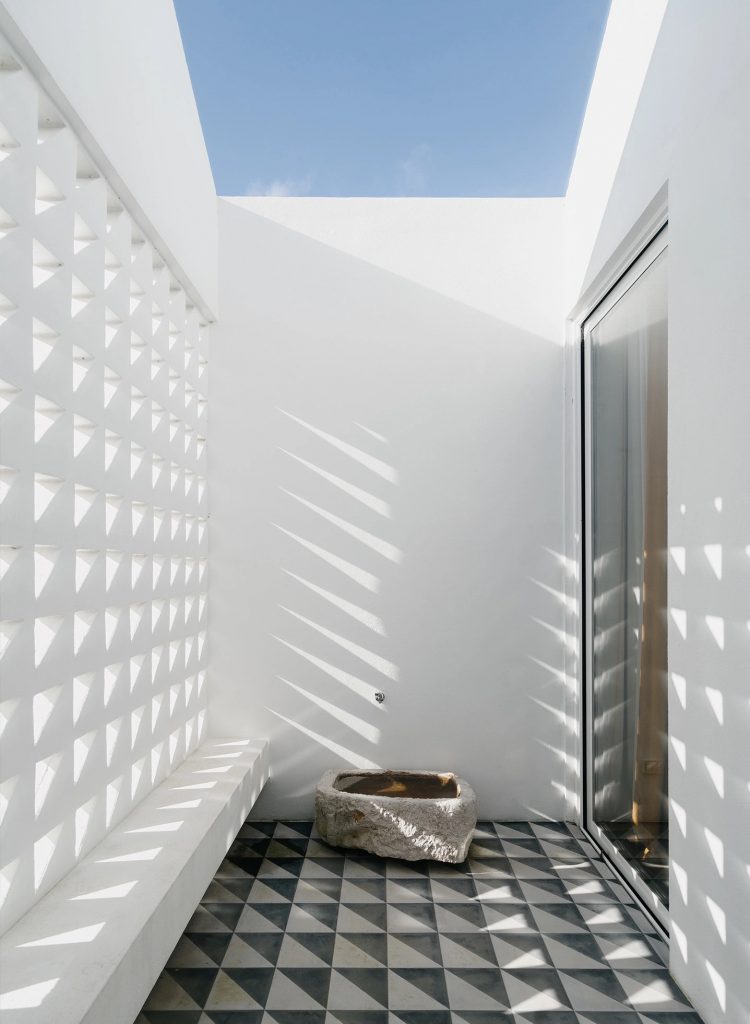
Casa Mãe by Atelier Data
The renovation of Casa Mãe incorporates a range of traditional materials, such as clay roof tiles, lime render, and patterned hydraulic tiles, grounding the modern additions in the farmhouse’s regional context. The exposed timber roof structure remains a central feature, painted white to create high, light-filled ceilings, further enhancing the sense of openness and connection to the landscape.
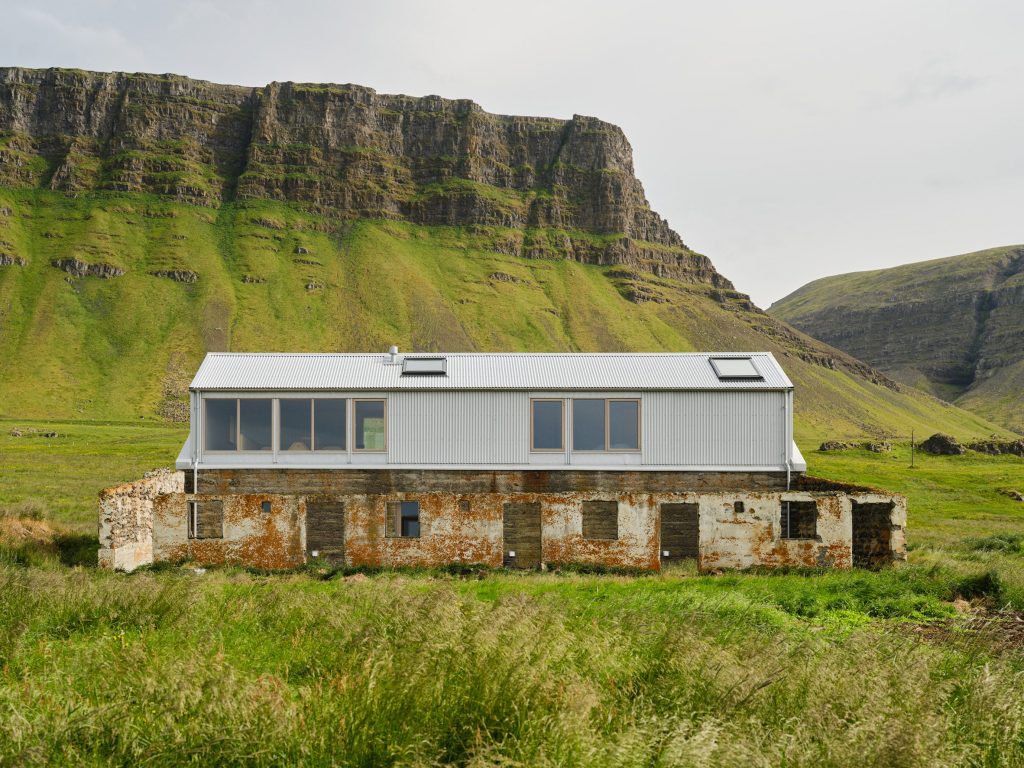
Repurposed barn by Studio Bua (also header image)
Continuing the trend of repurposing abandoned farm buildings, Studio Bua, with offices in London and Oslo, has transformed a derelict farm structure in Iceland into a beautiful artist’s studio and residence. Situated near the Breiðafjörður Nature Reserve in western Iceland, the project breathes new life into an old concrete barn, combining the past with the present while creating a serene living and creative space for its owners.
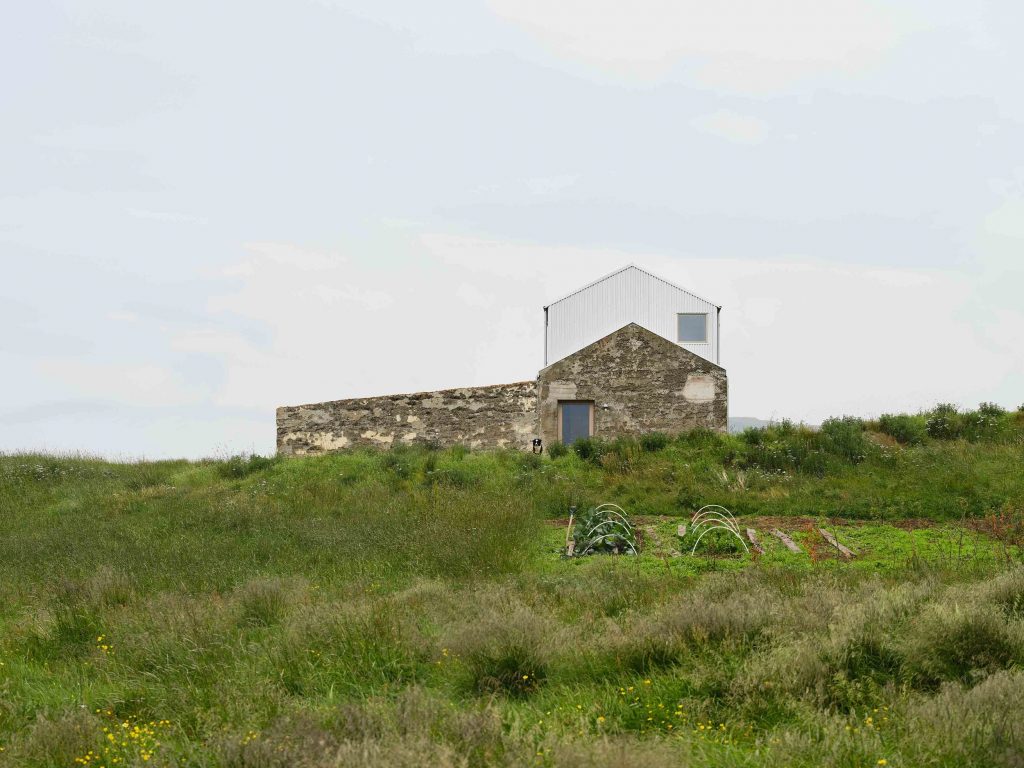
Repurposed barn by Studio Bua
The design challenge involved adapting the barn’s existing robust concrete structure to accommodate both a working studio and a holiday home, while respecting the building’s history and surrounding landscape. Studio Bua’s solution was to retain the original barn’s main concrete structure, preserving its integrity while introducing a new gabled volume above, nestled inside the existing walls. This new addition contains more private, domestic spaces, including a sitting room, two bedrooms, and a bathroom, all designed to maximize views of the fjord and beach beyond.
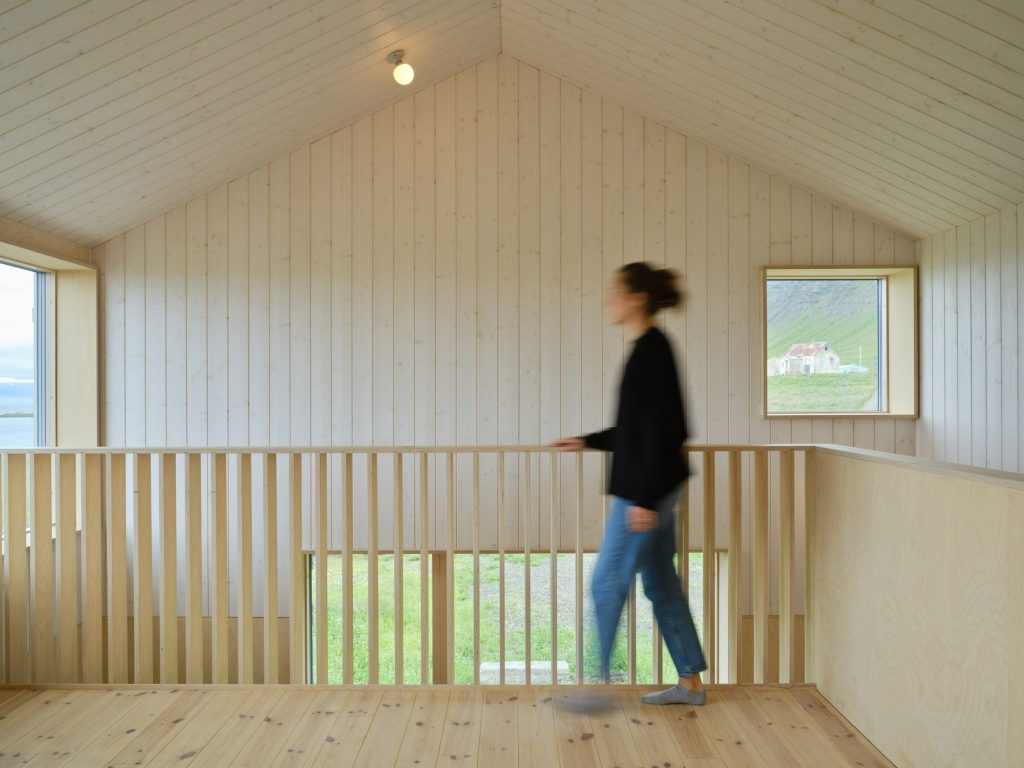
Repurposed barn by Studio Bua
The project balances the utilitarian character of the barn’s original form with a modern, thoughtful extension. On the ground floor, the concrete walls were left largely untouched, with minimal openings made only where necessary to let in more natural light. The kitchen and dining areas are positioned to make the most of the available space and stunning views, while the double-height studio space offers the perfect environment for artistic creation.
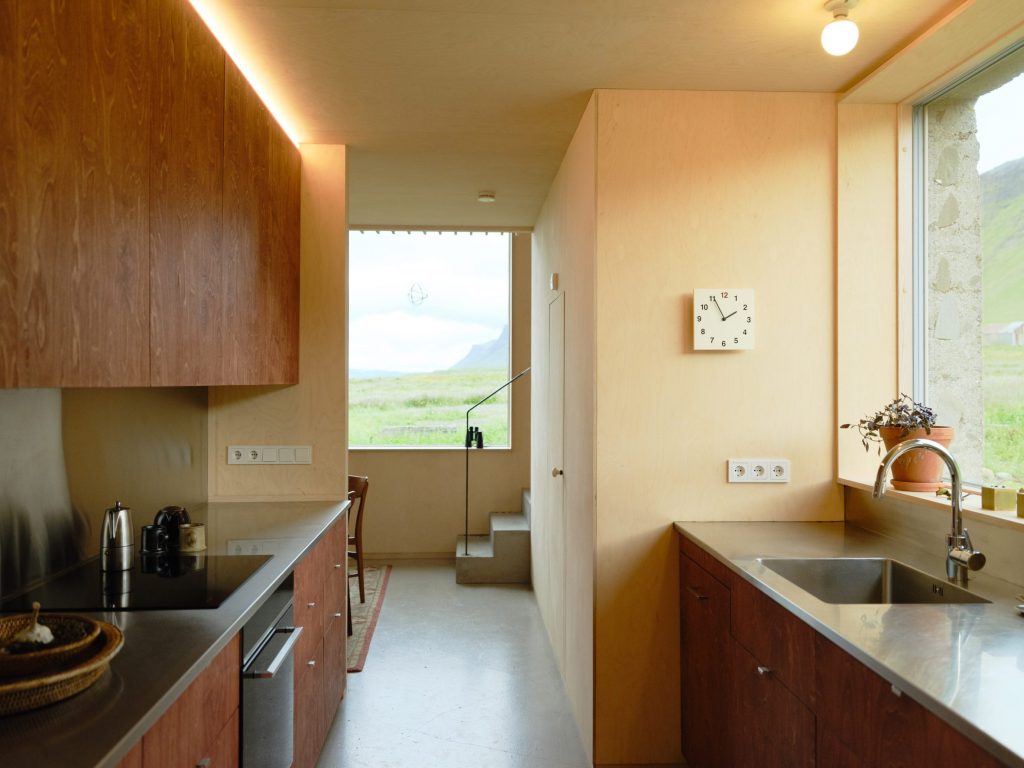
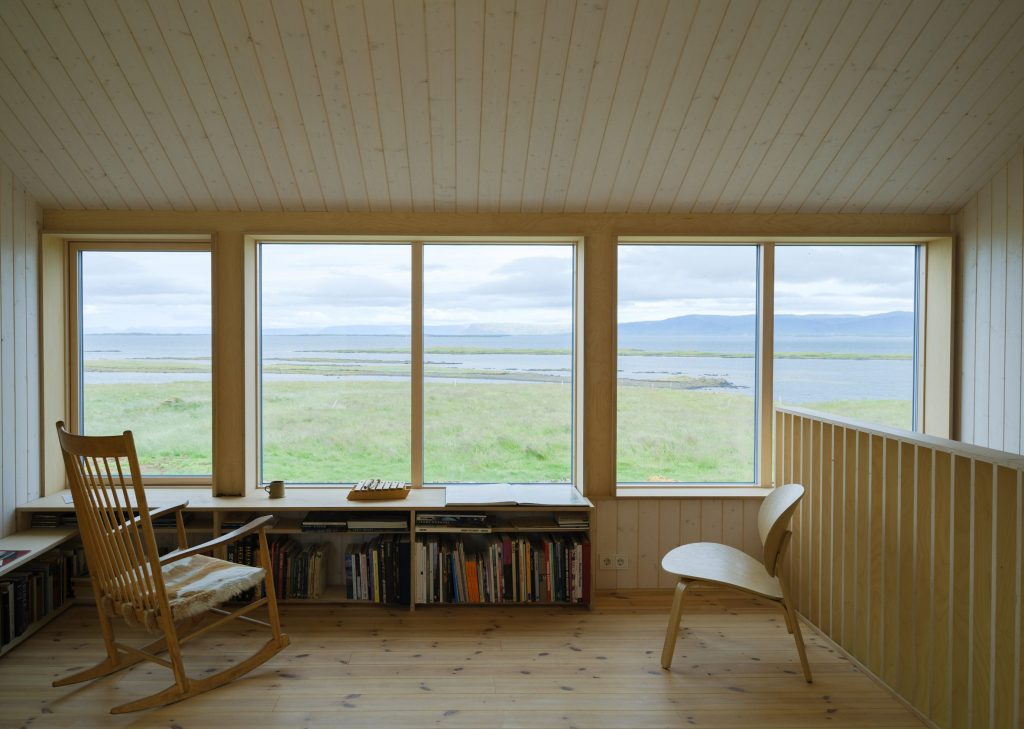
Repurposed barn by Studio Bua
The interior design focuses on simplicity and practicality, using a restrained material palette of exposed concrete, stained birch plywood, and white-stained pine boards. The architects worked closely with the client—an artist herself—to select pigments for the plywood that reflect the surrounding landscape’s earthy tones. Reclaimed materials are incorporated throughout, from plywood handrails made from offcuts to outdoor furniture crafted from salvaged concrete. All the internal doors and bathroom sink were sourced from a recycling center in Reykjavik, emphasizing sustainability and a connection to local resources.
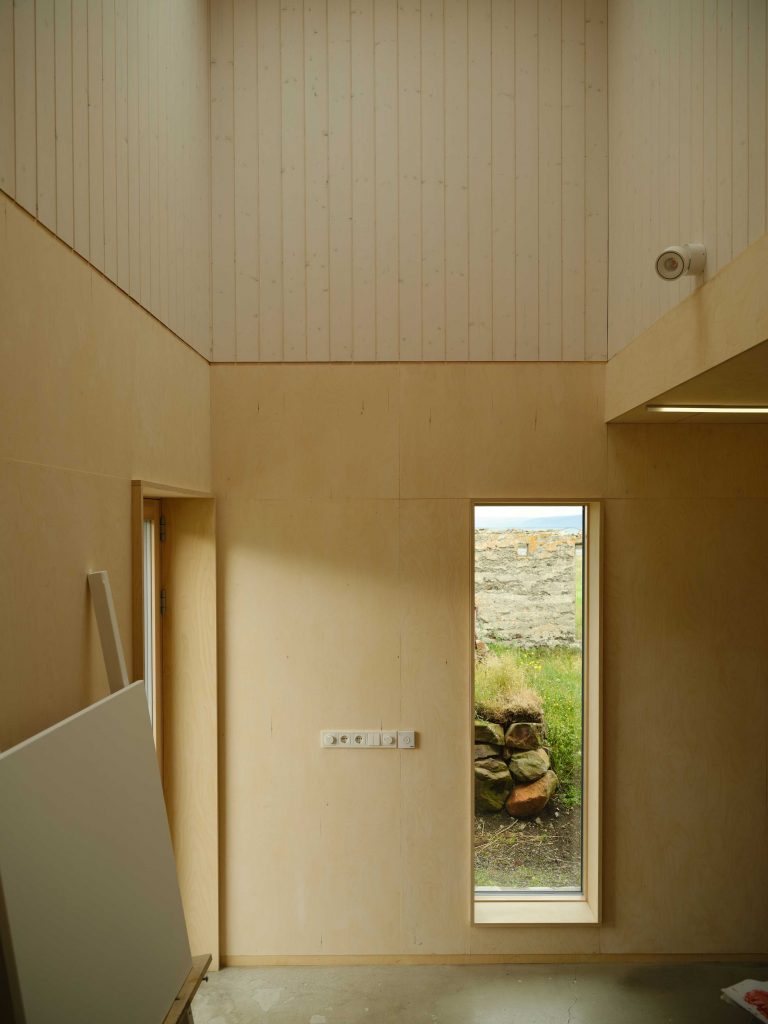
Repurposed barn by Studio Bua
The addition of a corrugated metal-clad gabled roof helps distinguish the new extension from the existing structure while echoing its form. A staircase leads up to the sitting room, where a row of windows frame the dramatic landscape of the beach and fjord, providing an inspiring setting for the artist’s residence.
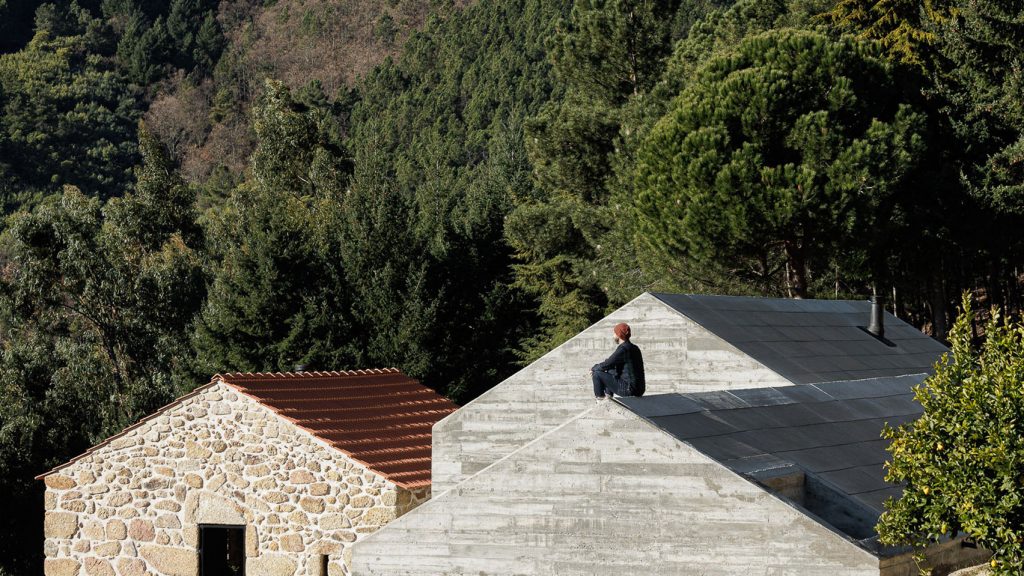
Casa NaMora by Filipe Pina and David Bilo
In the tranquil region of Guarda, Portugal, architects Filipe Pina and David Bilo have skillfully extended Casa NaMora, a mid-20th-century granite farmhouse, blending contemporary design with traditional materials. Located at the foot of the Serra da Estrela mountain range, the project updates the existing farmhouse while introducing two intersecting gabled concrete volumes that enhance the functionality and aesthetic of the home.

Casa NaMora by Filipe Pina and David Bilo
The extension, designed to step down the site, adds three bedrooms, a spacious living area, and an open-plan kitchen and dining space. By freeing up the original farmhouse, the architects were able to repurpose it for storage and technical facilities related to the surrounding farm, allowing the new volumes to support the daily needs of rural life. The two concrete additions were carefully positioned on an existing terrace, maintaining a close relationship with the original granite structure to ensure continuity and harmony.
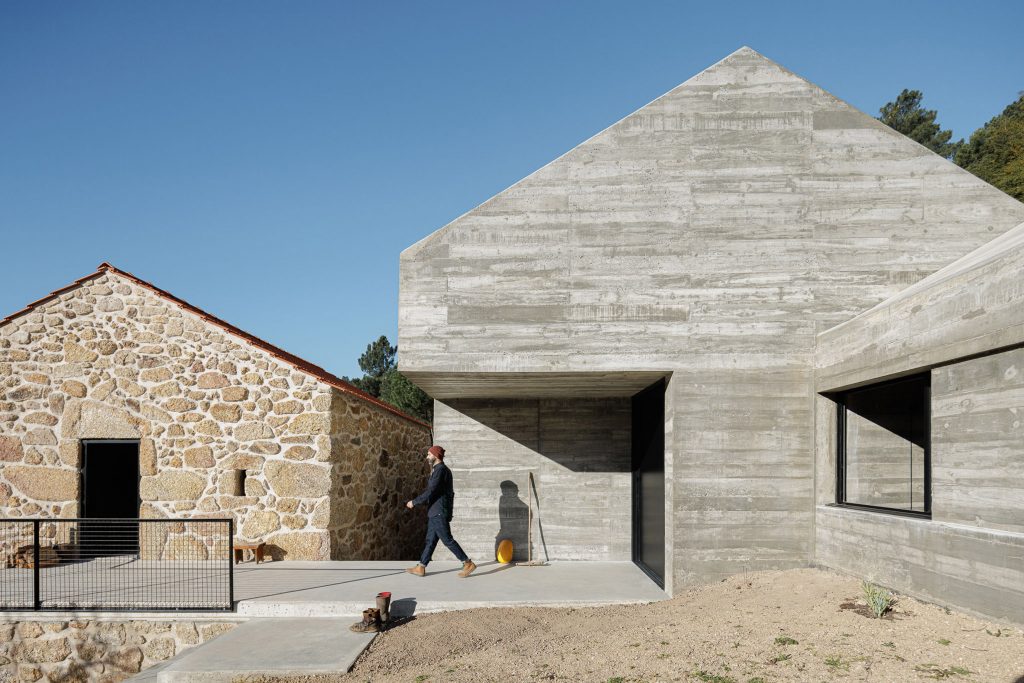
Casa NaMora by Filipe Pina and David Bilo
The exterior of the extension features rough, board-marked concrete, echoing the texture of the farmhouse’s granite, creating a seamless integration between the old and the new. A slim concrete terrace links the two volumes at the front, while at the rear, a poolside patio and garden offer a private outdoor retreat, accessed through a fully-glazed gable end of the living space.
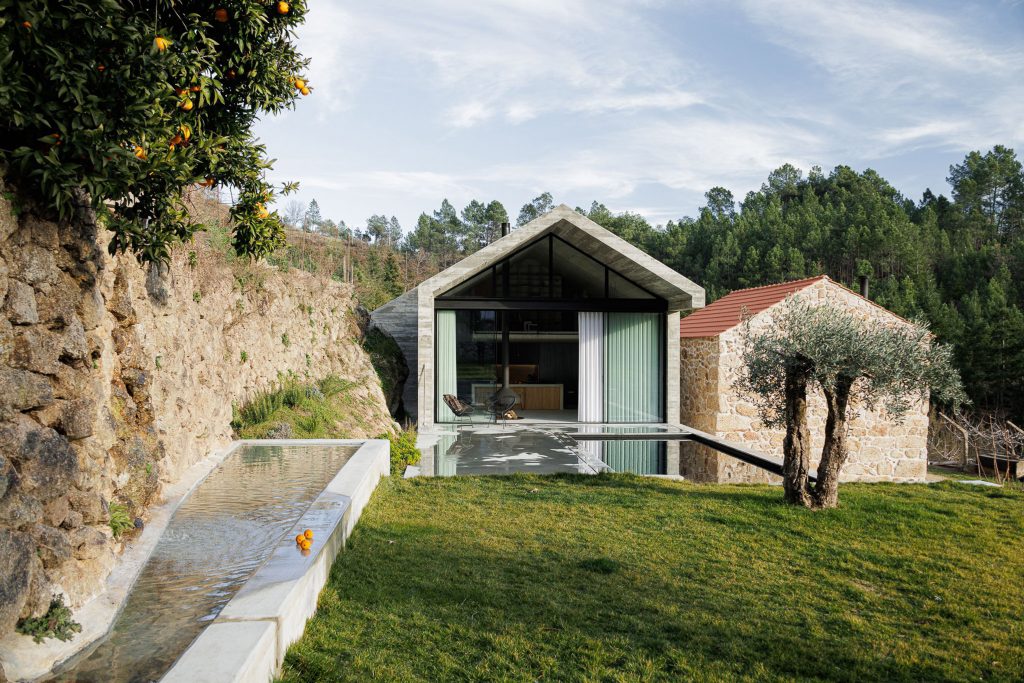
Casa NaMora by Filipe Pina and David Bilo
Inside, the design embraces a minimalist, pared-back aesthetic. The exposed concrete ceilings, white-painted walls, pale wooden furniture, and simple white curtains create a serene, neutral atmosphere that allows the natural surroundings to take center stage. A suspended fireplace anchors the open-plan living area, and a mezzanine level, with a black metal balustrade, overlooks the kitchen and patio. The bathrooms are finished with blue tiles and black stone, and feature small courtyards planted with greenery, adding to the sense of tranquility and connection to nature.
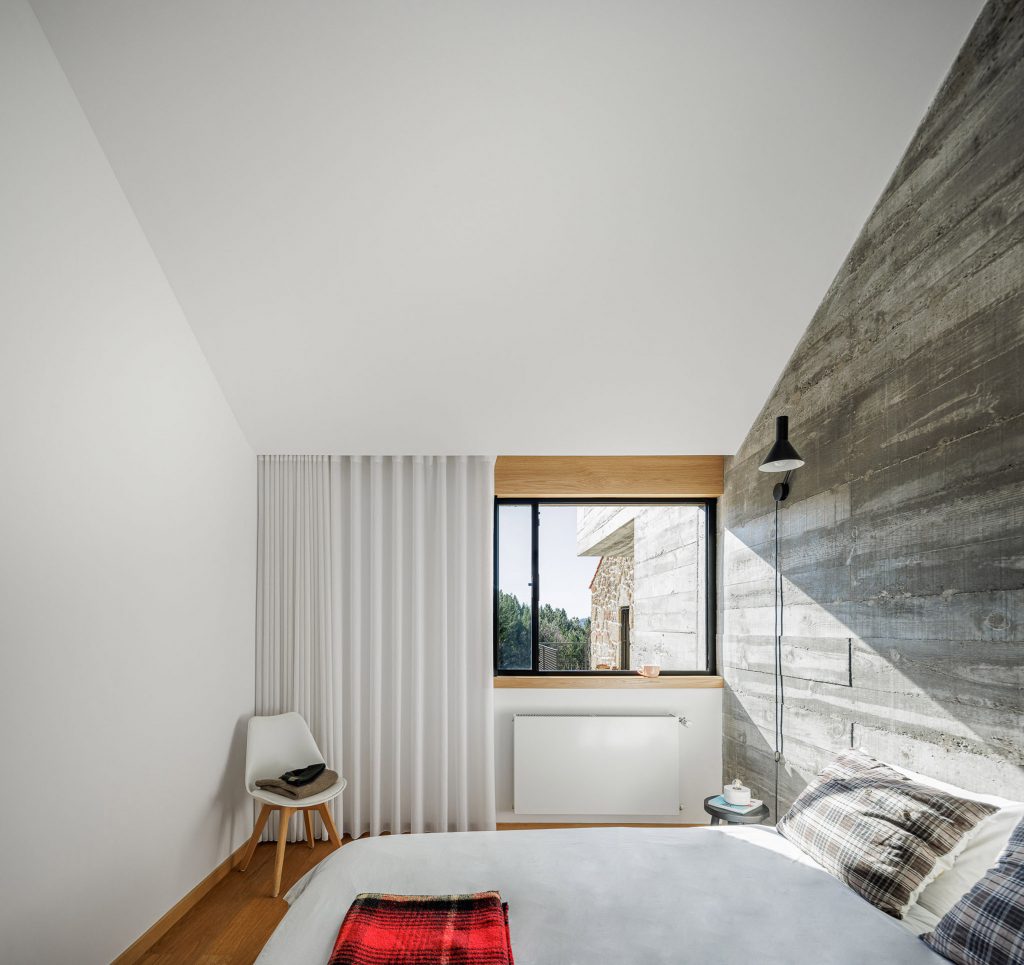
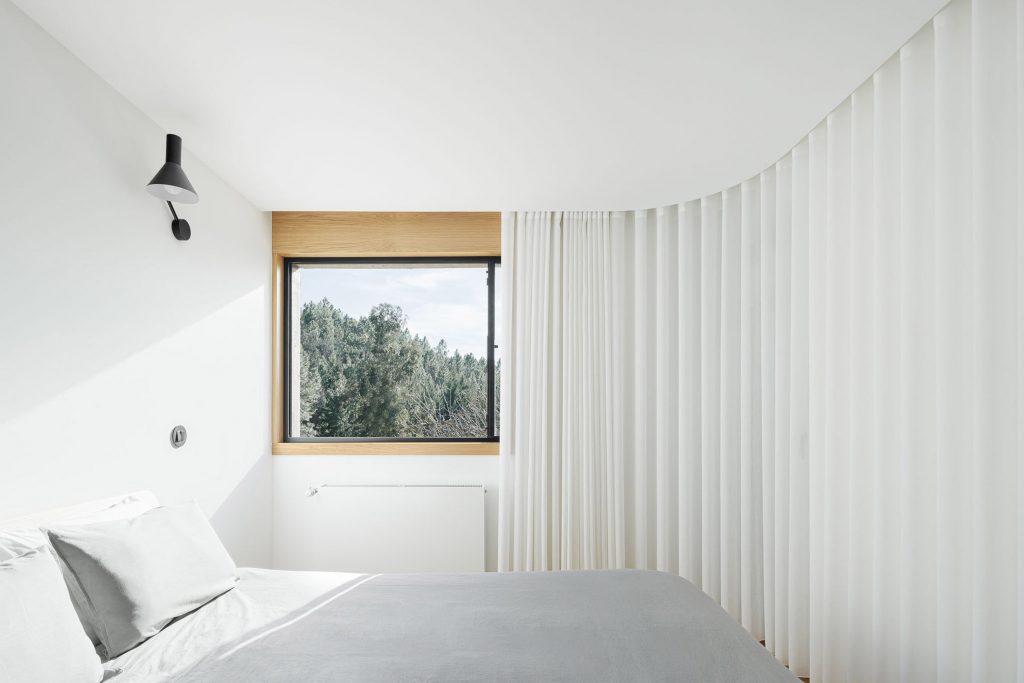
Casa NaMora by Filipe Pina and David Bilo
Throughout the house, the architects focused on simplicity and clarity, choosing materials that create a sense of purity and neutrality. Carefully placed openings allow for framed views of the landscape and courtyards, reinforcing the connection between the interior and the surrounding environment.
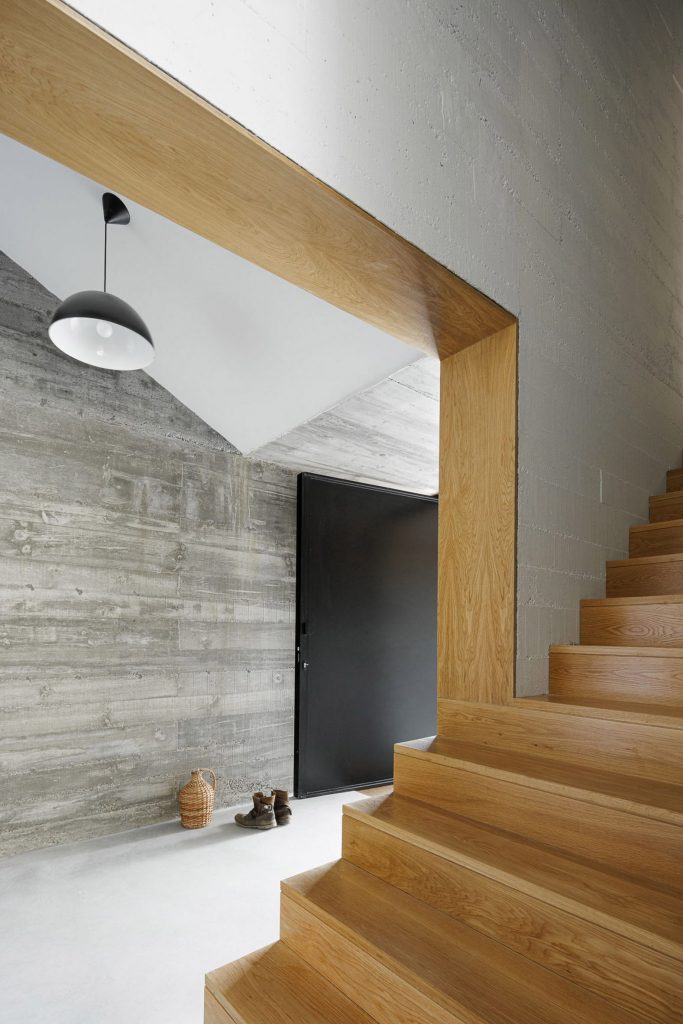
Casa NaMora by Filipe Pina and David Bilo
With Casa NaMora, Pina and Bilo have successfully updated a historic farmhouse, creating a space that respects its past while embracing the needs of modern rural living. The result is a harmonious blend of tradition and innovation, offering a contemporary interpretation of rural architecture that is both functional and beautiful.